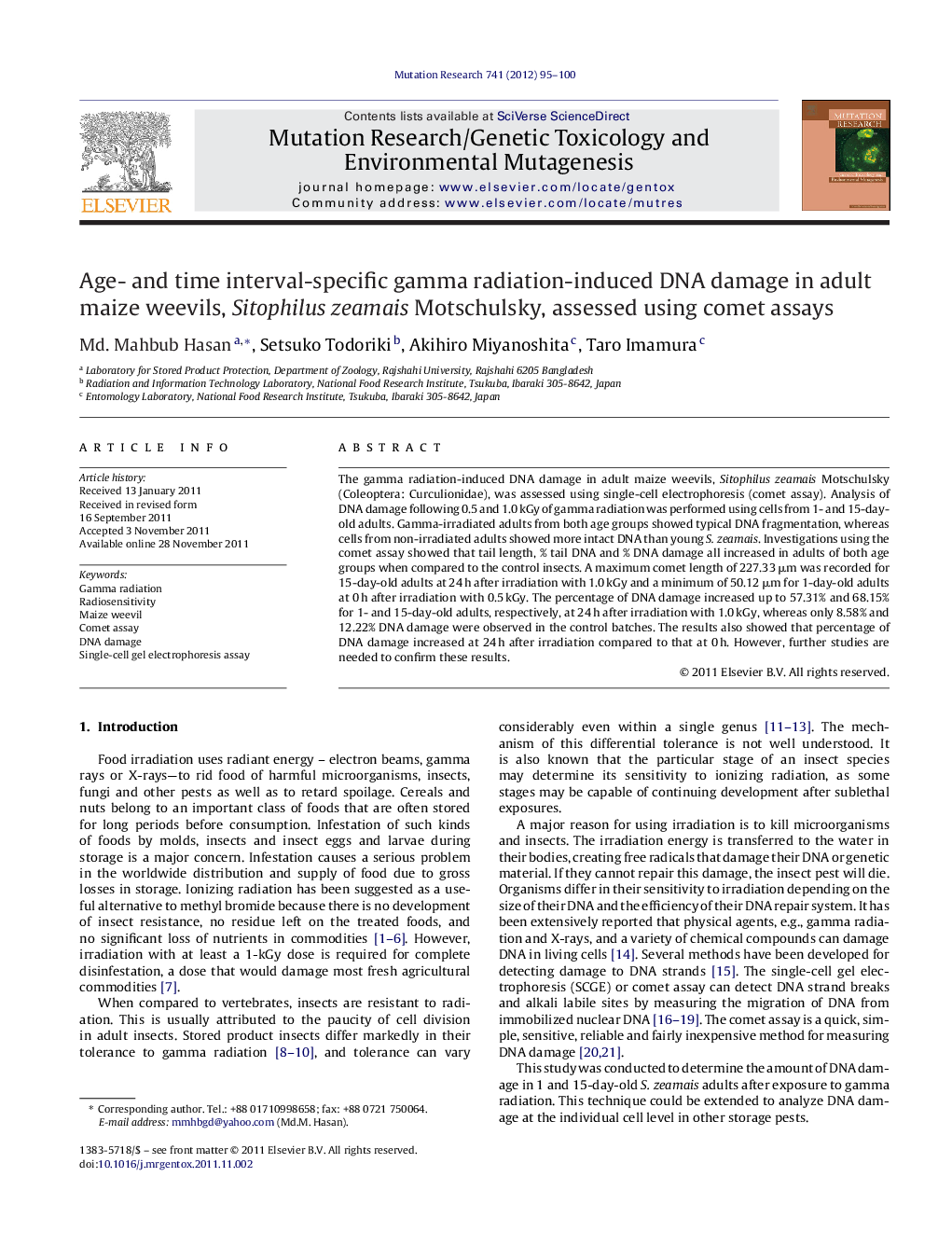| Article ID | Journal | Published Year | Pages | File Type |
|---|---|---|---|---|
| 2148184 | Mutation Research/Genetic Toxicology and Environmental Mutagenesis | 2012 | 6 Pages |
The gamma radiation-induced DNA damage in adult maize weevils, Sitophilus zeamais Motschulsky (Coleoptera: Curculionidae), was assessed using single-cell electrophoresis (comet assay). Analysis of DNA damage following 0.5 and 1.0 kGy of gamma radiation was performed using cells from 1- and 15-day-old adults. Gamma-irradiated adults from both age groups showed typical DNA fragmentation, whereas cells from non-irradiated adults showed more intact DNA than young S. zeamais. Investigations using the comet assay showed that tail length, % tail DNA and % DNA damage all increased in adults of both age groups when compared to the control insects. A maximum comet length of 227.33 μm was recorded for 15-day-old adults at 24 h after irradiation with 1.0 kGy and a minimum of 50.12 μm for 1-day-old adults at 0 h after irradiation with 0.5 kGy. The percentage of DNA damage increased up to 57.31% and 68.15% for 1- and 15-day-old adults, respectively, at 24 h after irradiation with 1.0 kGy, whereas only 8.58% and 12.22% DNA damage were observed in the control batches. The results also showed that percentage of DNA damage increased at 24 h after irradiation compared to that at 0 h. However, further studies are needed to confirm these results.
Graphical abstractComet assay would be potentially useful tool for detecting DNA damage in pest control strategies. Typical DNA fragmentation noticed in irradiated adults, while more intact in non-irradiated adults. DNA damage increased at 24 h after irradiation compared to zero hour.Figure optionsDownload full-size imageDownload as PowerPoint slideHighlights► Comet assay is an excellent tool for detecting DNA damage in insect cells. ► This technique could be extended to analyze DNA damage at the individual cell level in storage pests. ► Results suggest a link between insect age and tolerance of ionizing radiation. ► Hypotheses prove that there is less reduction in cellular damage caused by reactive radical species.
